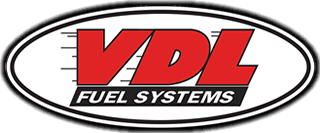vdl2011-04-25T19:57:27-06:00Salem, Indiana (Saturday, April 23rd, 2011): Brian Campbell made history at Toledo Speedway in Toledo, Ohio on Saturday, April 23rd as the Wyoming, Michigan veteran took the lead from 14-year-old Erik Jones on lap 18 and from there, Campbell would fend off challenges from Jones and then a late charge from another veteran, Eddie Hoffman, and in the end, Campbell would steer his McGunegill Engine Performance Ford into victory lane after winning the VR-12/Easter Bunny 100 Presented by JEGS.com, the inaugural race for the JEGS/CRA All-Stars Tour Presented by GM Performance Parts.
“This is pretty special to come here against such a great field of cars and get to take the trophy home in the series first ever race.” Campbell stated in victory lane. “We had a great car, but we were a little worried about Erik (Jones) and then I seen the #8 go up on the scoreboard and knew that Eddie (Hoffman) was lurking back there as well, so I had to stay on top of the steering wheel.” The former Glass City 200 winner at the track added.
After a rousing pre-race ceremony and driver introduction for the stout 32-car field, the VR-12 Easter Bunny 100 Presented by [...]



